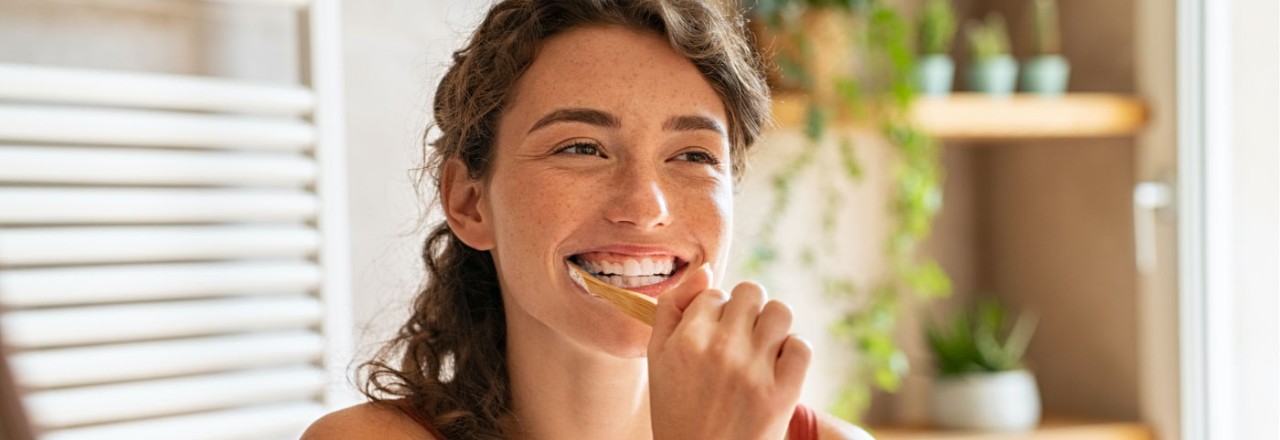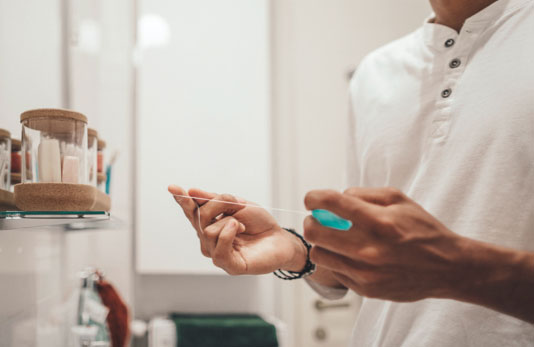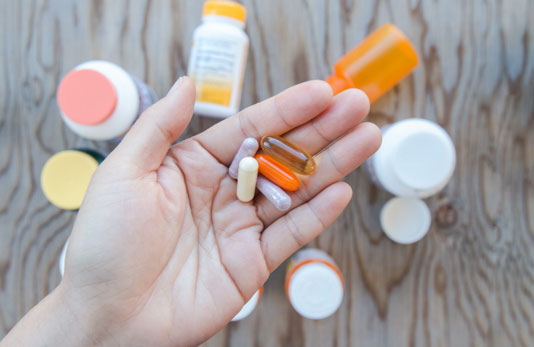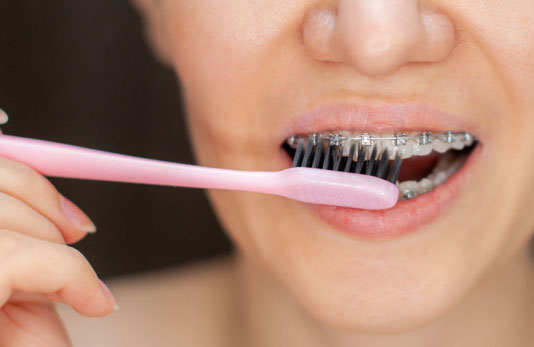Go green with your dental routine

Incorporate these tips into your daily life to enjoy a healthier mouth and planet.
Upgrade and upcycle your toothbrush
Brushing your teeth twice every day is essential for your oral health, but there's no law that says a toothbrush has to be made of plastic. Approximately one billion plastic toothbrushes get thrown out in the United States every single year.
Consider a more eco-friendly option like a bamboo brush if you want to green your routine.
And no matter which material you choose: After three months, when it comes time to replace your toothbrush, consider giving your old toothbrush a new life. Get creative and use this convenient little tool for any number of household jobs, as a keyboard cleaner, sneaker scrubber, jewelry polisher, bottle cleaner or paintbrush, rather than just tossing it out. To repurpose a used toothbrush for household tasks, simply soak it in a solution of one part bleach and two parts water for two minutes first.
If you don't need the extra toothbrush your dentist offers at the office, feel free to decline it. Dedicate a single hand-held brush as your "travel toothbrush" and travel with it instead of using single-use or hotel supplies.
Rethink your floss
Most floss is made of nylon fibers that take years to break down and are too small to be processed by normal recycling plants. Floss containers and floss picks are often considered mixed materials that can’t be recycled.
Consider making the switch to a zero-waste, plastic-free reusable glass container for your floss, and look for floss packaged in paper instead of plastic.
Floss itself can come in biodegradable materials, such as silk, corn-based plastic, wood and even bamboo, so consider making the switch for a greener routine.
Brush up with eco-friendly toothpaste options
Traditional toothpaste tubes are made from different types of plastics, often laminated with a metal layer, resulting in a big barrier to recycling.
Rather than purchasing a plastic tube of toothpaste, consider making the switch to a plastic-free option. You can use toothpaste tablets, which are chewable, mint-sized tablets that can be stored in reusable jars or recyclable packaging. To use toothpaste tablets, simply place one in your mouth and begin chewing. You can let your saliva naturally break it down into a paste or give it a boost with a sip of water. Once it’s broken down into a paste-like texture, brush using a wet toothbrush for two minutes as you would with your regular toothpaste.
If the traditional tube is still your thing, you can also opt for toothpaste in a tube made of recyclable material.
Whatever type of toothpaste you end up choosing, remember that fluoride is key to preventing cavities and keeping your smile healthy and clean. If you're not sure if a new option is right for you, talk to your dentist before switching to make sure your new toothpaste contains enough fluoride to properly fight cavities.
Save water
There’s no need to run water if it isn’t being used. After you’ve wet your brush, conserve water by turning off the tap and using a cup of water to swish.
Green your routine
Here are a few tips on how to make your daily dental routine more eco-friendly from sustainability expert Skylar Saba of Happy Earth Habits.
Last updated April 19, 2023
Related articles:
The oral health information on this website is intended for educational purposes only. Always consult a licensed dentist or other qualified health care professional for any questions concerning your oral health.


